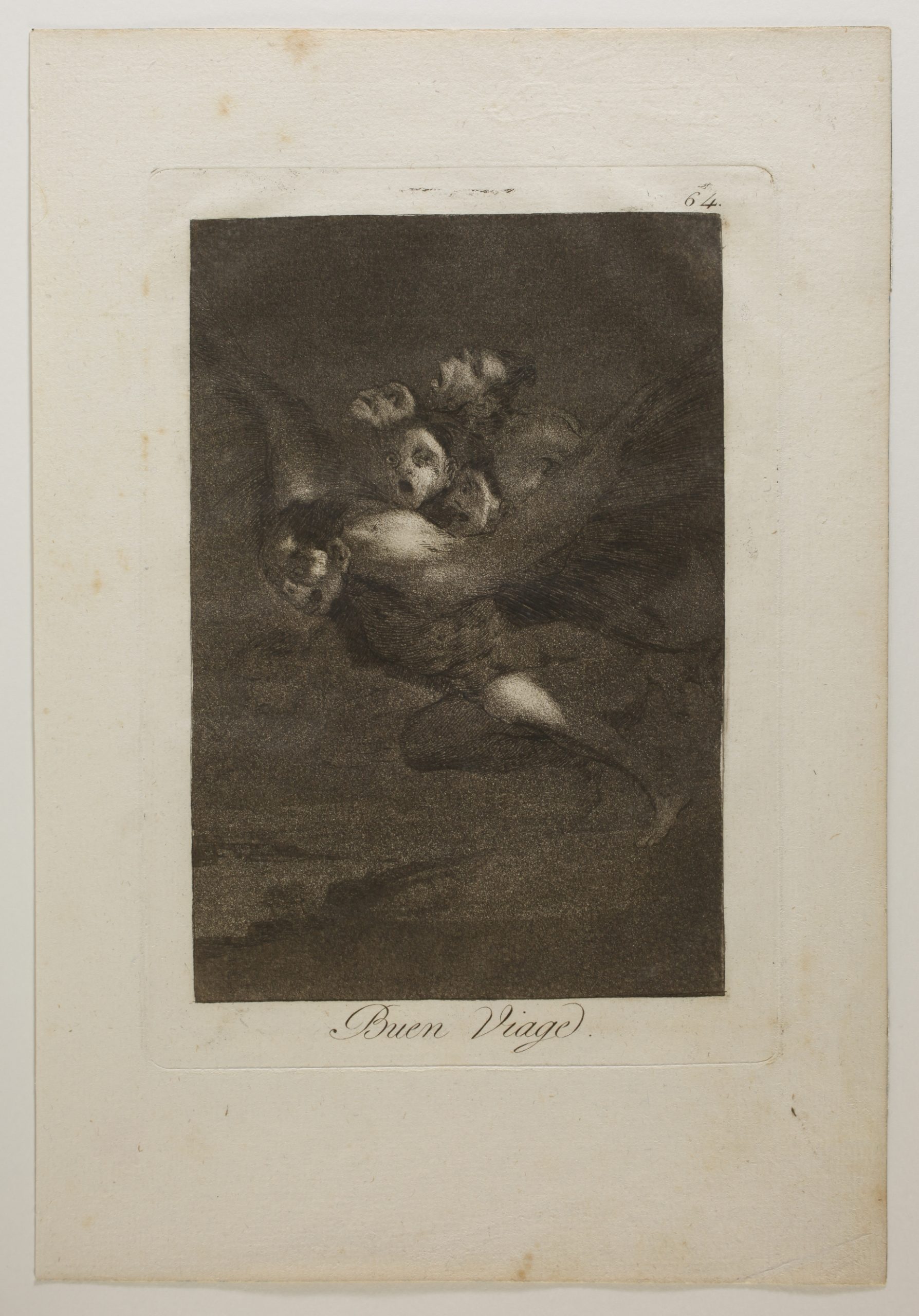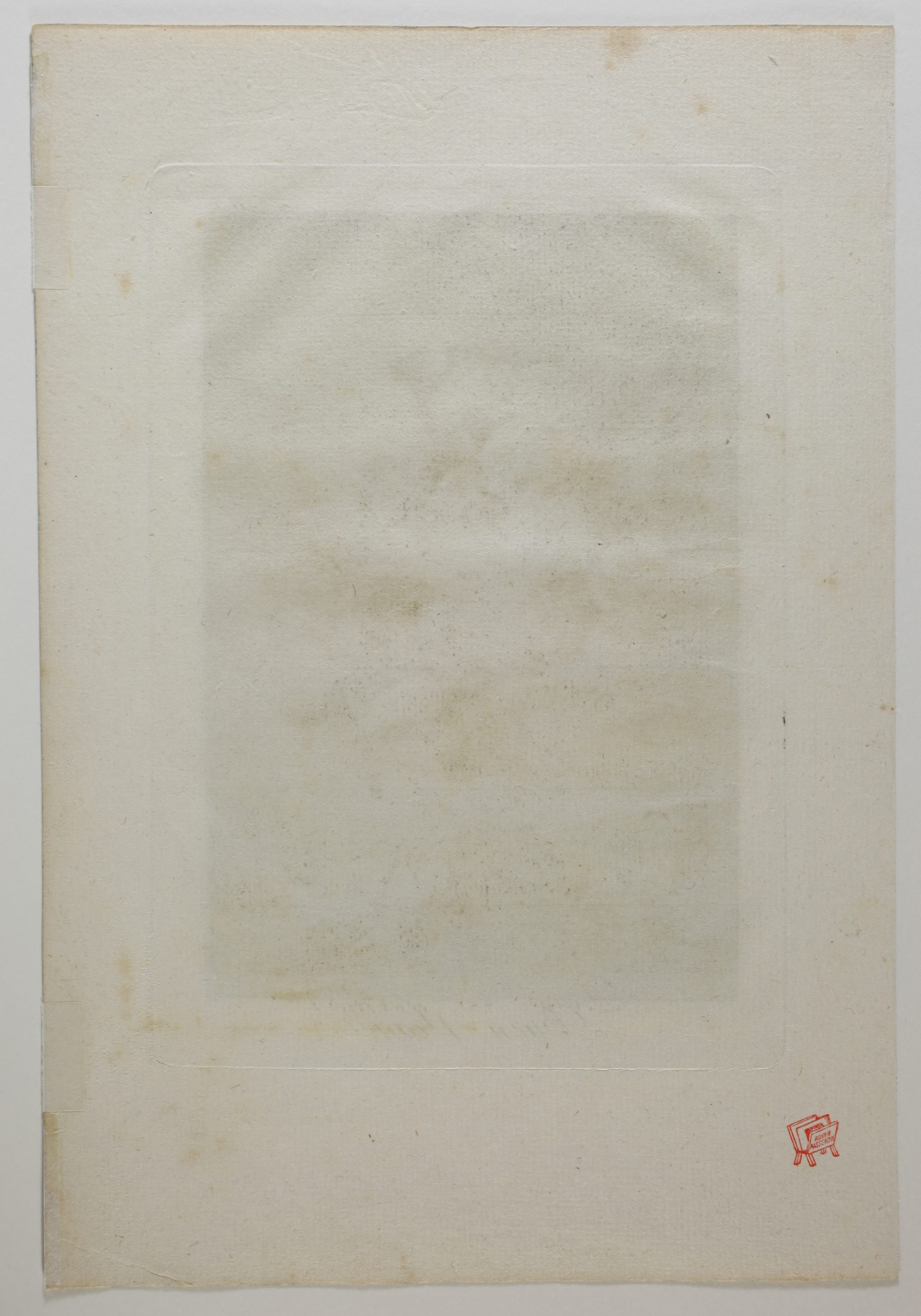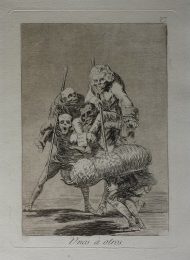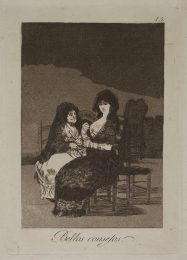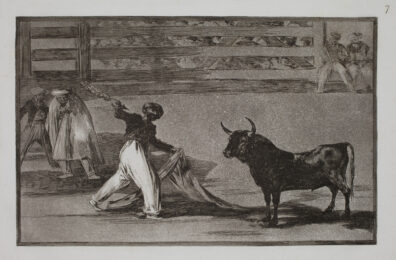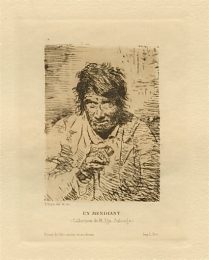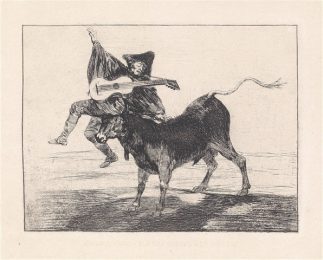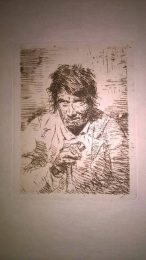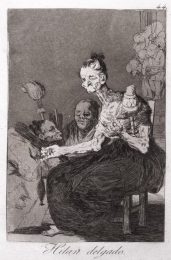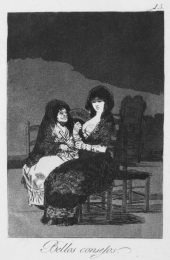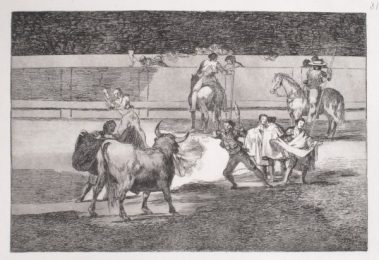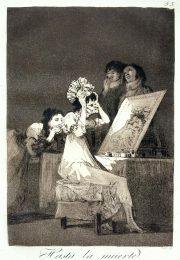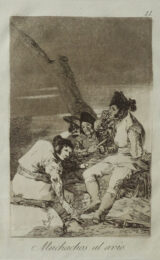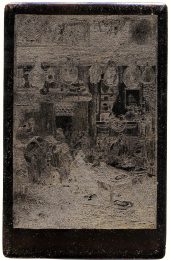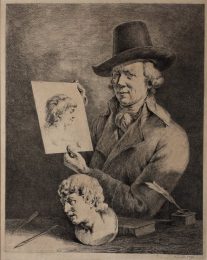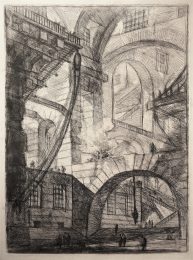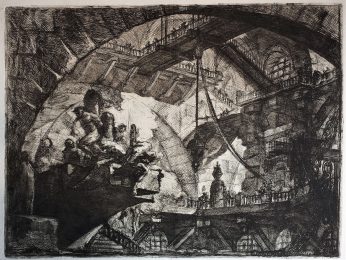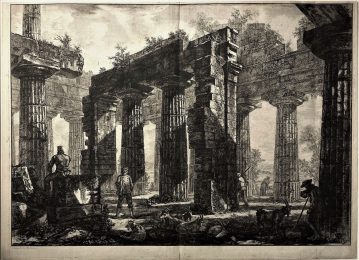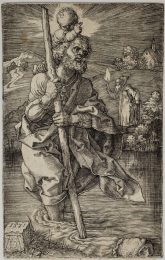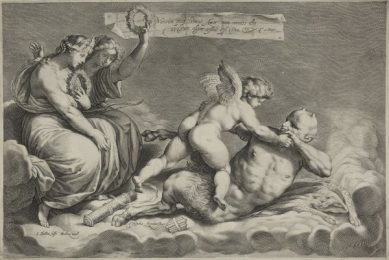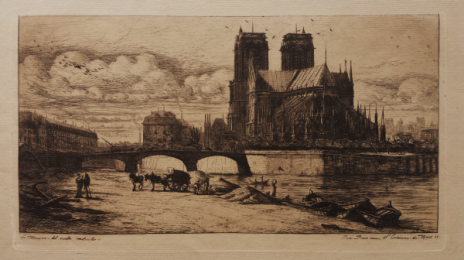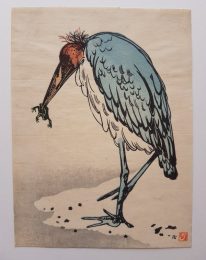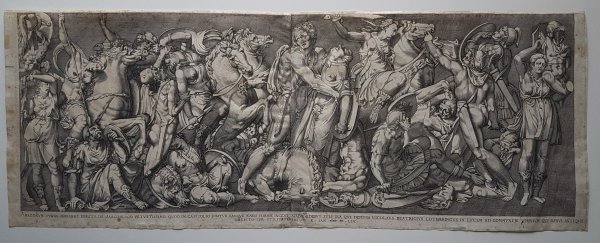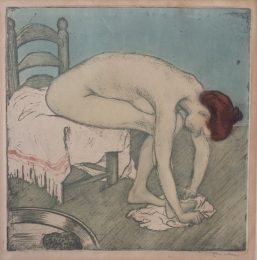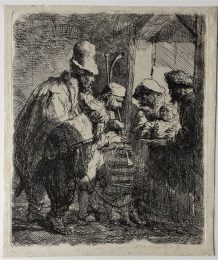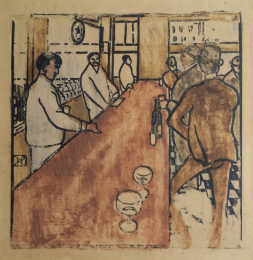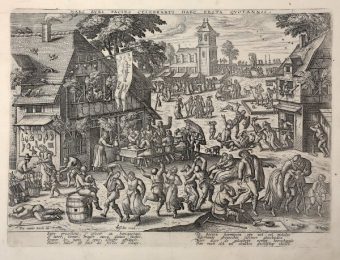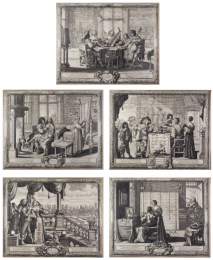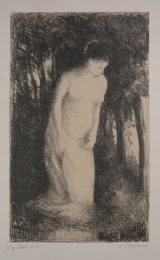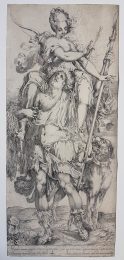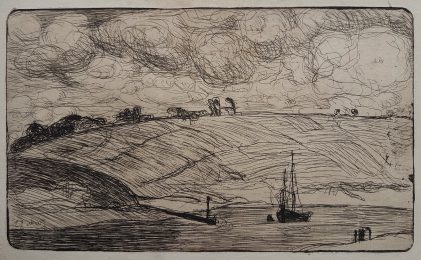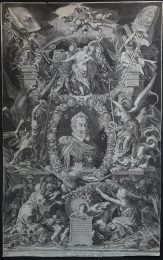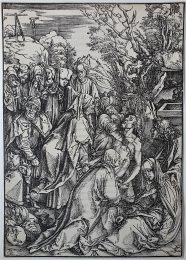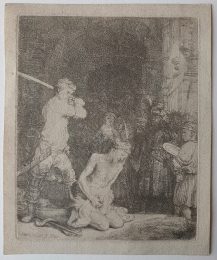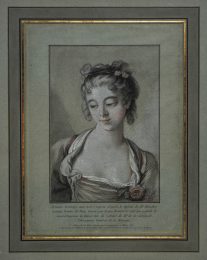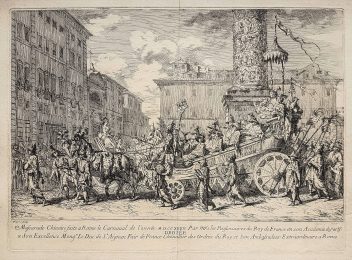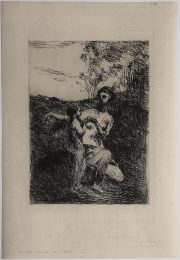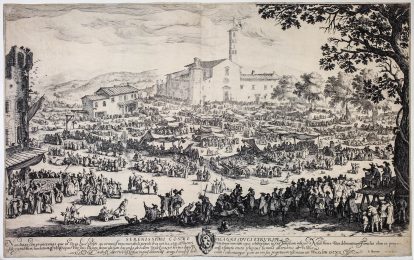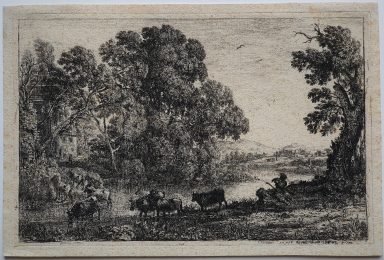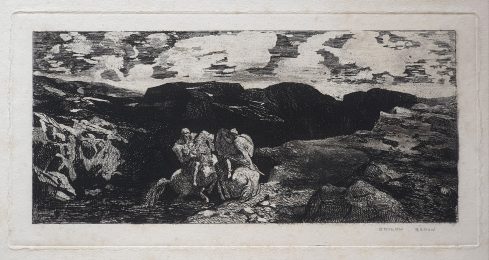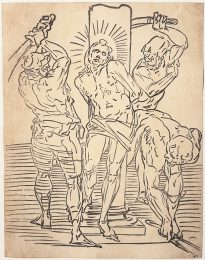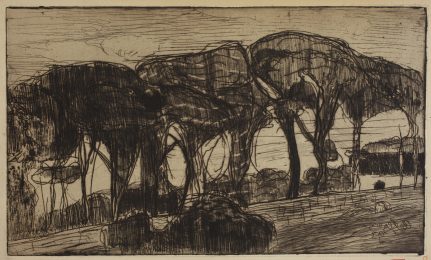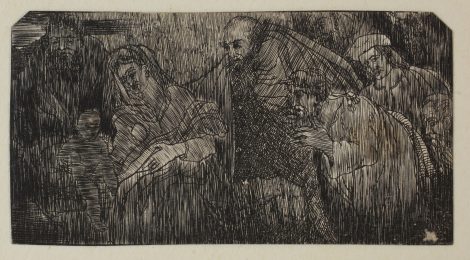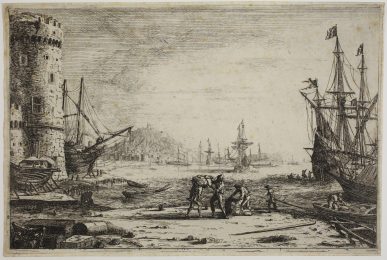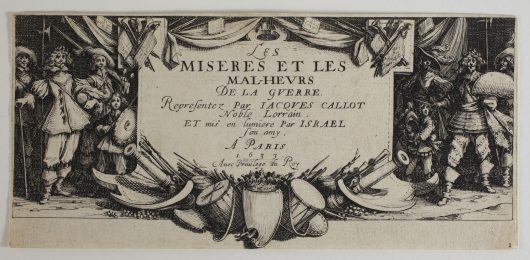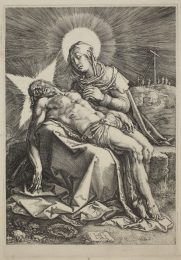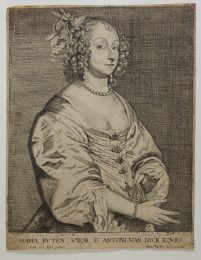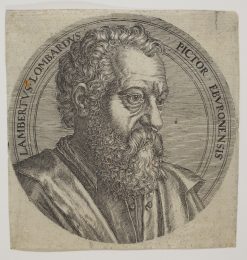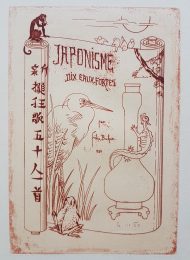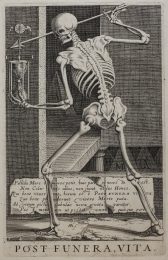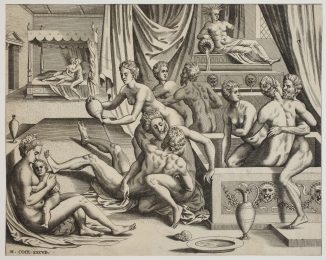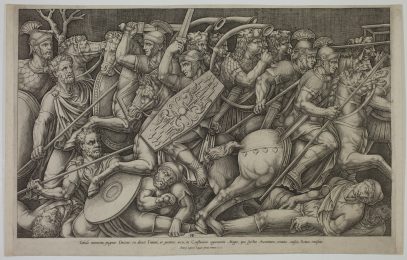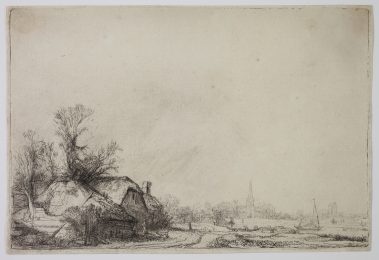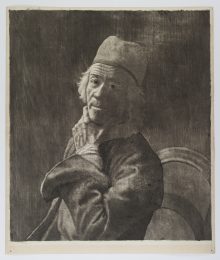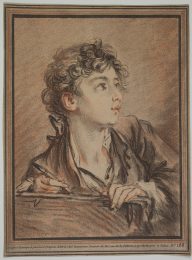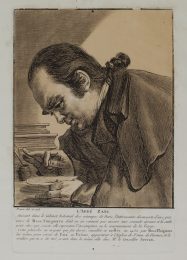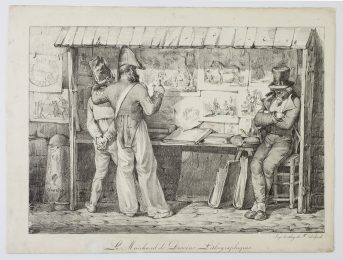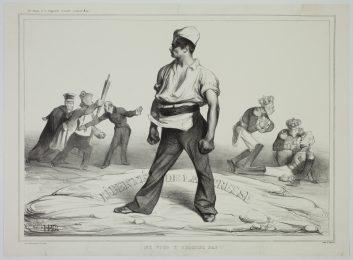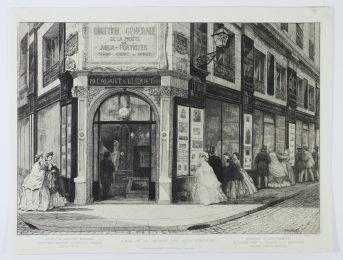Details — Click to read
Etching, aquatint, burnishing and engraving, 215 x 151 mm. Harris 99, III-1 (from 12).
Plate 64 from the Los Caprichos [The Caprices] series, first edition, 1799 (approximately 300 copies).
Superb impression printed in dark sepia on laid paper. In excellent condition: rare foxmarks in the margins. Wide margins (sheet: 302 x 207 mm).
Provenance: collection Roger Passeron (1920-2020), with his stamp printed in red on the back of the sheet (Lugt 4096).
Tomás Harris emphasizes how Goya uses two types of resin grains for aquatint in this plate, some quite coarse, others finer; he also points out his use of the burnisher in the manner of a mezzotint, in order to create a variety of tones. While Goya makes extensive use of aquatint here to create the chiaroscuro that is so characteristic of the Caprices series, he rarely resorted so little to etching as in Buen Viage. The landscape over which the group of witches and demons flies is almost entirely drawn in aquatint, with the exception of a few small etched lines in the lower left corner. The figures, slightly more detailed in etching, do not, however, have sharp contours, contrary to most of the other plates in the series. Only a few highlights of pale light, obtained with a burnisher, illuminate the deformed faces and fall on the shoulder and knee of the monstrous winged creature. This subtle chiaroscuro, well preserved in this print, creates the eerie atmosphere described by Mercedes Cerón-Peña: ” The blurring of the creatures that emerge from or disappear into the velvety layers of aquatint of the backgrounds lends the scene a nightmarish quality ” (Goya’s graphic imagination, p. 128). This atmosphere will be lost in successive editions as the aquatint wears away and the stronger etching lines come out more.
Mercedes Cerón-Peña notes a few differences between the preparatory drawing, in the Prado Museum (no. 441), and the engraving: the winged creature no longer looks ahead but towards the earth that it flies over, while the central figure perched on its back has its face turned towards us and stares at us, its eye and mouth wide open.
The manuscript in the Prado Museum, sometimes attributed to Goya, has this comment on the plate: “¿Adónde ira esta caterva infernal dando aullidos por el aire entre las tinieblas de la noche? Aún si fuera de día, ya era otra cosa, y, a fuerza de escopetazos, caería al suelo toda la gorullada; pero como es de noche nadie las ve”. “Where will this infernal cohort go, howling in the air through the darkness of the night? Again, if it were day, it would be something else; by dint of rifle shots they would make all this mob fall to the ground, but it is night, nobody sees them.” (translated by us).
References: Tomás Harris: Goya: Engravings and lithographs, 1964; Mark P. McDonald, with texts by Mercedes Cerón-Peña, Francisco J. R. Chaparro and Jesusa Vega: Goya’s graphic imagination, 2021.

![Buen Viage [Bon voyage] by Francisco Goya](https://www.printed-editions.com/wp-content/uploads/2021/05/goya_buen_viage_sarah_sauvin-1.jpg)
